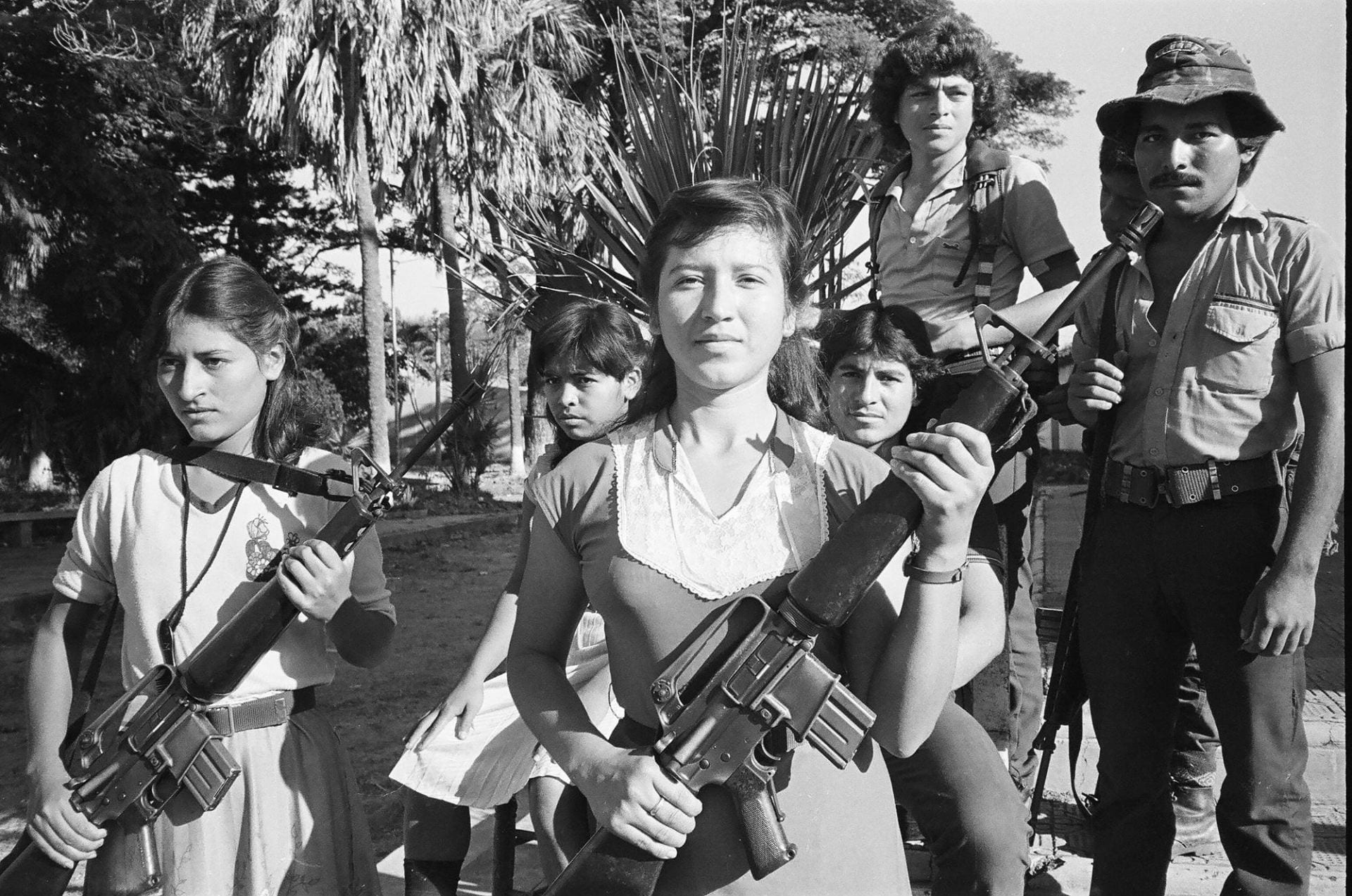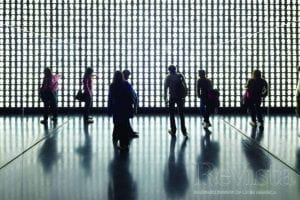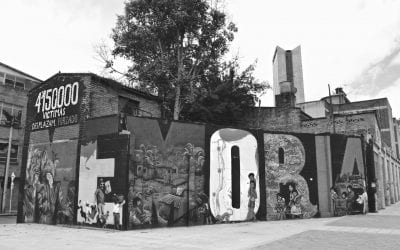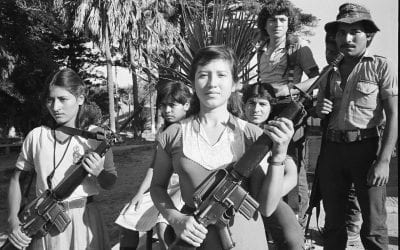First Take: Memories and Their Consequences
I visited the Museo de la Memoria y los Derechos Humanos in Santiago, Chile, two years ago. It was a heart-rending experience. To enter the museum, I moved through a stark and subterranean passage and found myself in a somber space of transition. There, a wall of photographs transported me back in time—long ago in a messy graduate student lounge in Cambridge, Massachusetts, four of us stood in shock, watching television footage of airplanes strafing the government palace, La Moneda, tanks rumbling down city streets, and people fleeing, stumbling, looking backward in fear. I remembered how we began to sense that we were witnessing the end of a dream shared across a student generation that believed in the possibility and promise of peaceful revolution. For us, these images from Chile in 1973 evoked Armageddon. In Cambridge, we held hands and we wept.
Almost four decades later at the museum, I watched the same television footage of airplanes, tanks, and people and I stopped to read the newspaper articles and the red and black posters promising a new world. The artistic energy of the protesters lived on in their communication: injustice and inequity could be vanquished. Then I was confronted with how this message had been rebuffed—I walked past the iron bed intended to accentuate electrical shocks, the tiny shoes and dolls of the children held captive with their parents, the letters, journals, and mementoes of lives cut short. Gradually, however, the museum’s prison-like feel gave way to an architecture of light and hope as the exhibits unfolded over four floors.
Along the way was a soaring atrium, lined with candles, the photos of the disappeared forming a broad, vertical collage, faces caught in a moment. This was my generation. Had these young people not been killed without a trace—disappeared—they would now be active in many walks of life: they would have become parents and grandparents; they would have experienced the hopes, disappointments, joys, and sorrows that the rest of us have known. Some might have made important contributions to the arts, or to the sciences, or to public life. Some might have continued to work for a more just society. In Argentina, Brazil, Guatemala, Peru, Uruguay, El Salvador, Paraguay and other countries also, so many lives of that revolutionary generation of the 1960s and 1970s are lost to us.
At the same time, all these years later, my own understanding of the very real threats embodied in radical social and political change had grown, and I could imagine the extent to which these young people represented a scourge of upheaval and insecurity to many in their societies. I appreciated the idealism of the young, and hoped I had not turned cynical in wondering what might have happened had the forces of order not put a stop to their experiment in protest and participation. The museum captured the moment, it evoked memories of shared experiences, and it forced me to reflect on how authoritarian and democratic political institutions are born, sustain themselves, and die.
When I returned to my office at the David Rockefeller Center for Latin American Studies, I spoke with colleagues about my museum experience in Santiago. Many of them had similar experiences, and the gray-haired amongst us shared personal stories of where we were and what we were doing when violent conflicts and political changes took place. One remembered being part of a march in Montevideo that ended brutally when the military cleared the streets on horseback—not in the 19th century, mind you, but in the 1960s. Another mentioned literary works that interpreted those times; another the work of a famous sculptor who evoked collective experiences of the past; another spoke of the altars to memories created for the Day of the Dead; another of the advances in brain science that are helping us understand how memory works; yet another of the ways that histories of violence and repression influenced new constitutions based on democratic expectations; while still another warned of unresolved tensions in some countries about how to understand the past.
Yes, we agreed, there is much to remember of that time in Latin America about the lives lost and beliefs betrayed: of the consequences of protest, repression, violence, and resistance, of regime changes and political aftermaths. Through scholarship and testimony, we are now well aware of the extent to which military governments in Chile, Argentina, Uruguay, Brazil and Guatemala made systematic use of violence, repression, disappearances, and fear to suppress resistance, protest, and human rights. But someone also spoke about the case of Mexico, where the military was largely marginalized from direct engagement in politics, but the machinery of the dominant party-state was nevertheless effective in subduing conflict and claims for democracy, including the use of systematic co-optation and repression of dissent. In Peru, another colleague made reference to how a civilian regime re-established state authority in the context of an ongoing and violent rebellion and, at the same time, significantly narrowed the space for democratic dissent. In these and other countries, when civil and military authoritarians held power, tens of thousands of individuals were imprisoned, killed, or disappeared, and millions lived with restricted freedoms and heightened vulnerability, despite many brave moments of resistance.
Repeatedly, my colleagues and I discussed the importance of understanding how such experiences become woven into collective memories of particular times and places and how they influence societies and their future. It was through such discussions that the Democracy and Memory in Latin America Collaborative was born in the months after I visited the museum. At the broadest level, we decided, the Collaborative would assess the authoritarian past and the collective memories it embodied and their implications for the development of democratic governments in the region. Our approach would be broad and multidisciplinary. We would focus on the experiences of many countries in Latin America, and we would seek to spark discussions across disciplinary, geographic and institutional boundaries. In time-honored academic tradition, of course, we would organize a conference, but that was clearly not sufficient for all the suggestions that emerged. In the end, we decided that we should also schedule special lectures, art exhibits, theatrical and musical events, courses, and films. We could engage our sister organizations across the university in planning and augmenting these events.
The ideas kept coming. One colleague suggested that these events should begin on September 11, 2013, the 40th anniversary of the Chilean coup, and another indicated how fitting it would be for the events to culminate in an altar and memorial at Harvard’s Peabody Museum of Archeology and Ethnology on November 2, the Day of the Dead. Our Brazil Studies Program was eager to mark the 49th anniversary of the 1964 coup in Brazil, and those with particular interest in Argentina and Guatemala were not to be denied. Staff members contributed ideas and set about compiling lists of films, artists, organizations and scholars. With time and collaborations from other organizations, we filled the calendar between September 11 and November 2 with a variety of activities. This issue of ReVista was planned to mark these events and June Carolyn Erlick immediately began to canvass for voices and images that would represent diverse perspectives and encourage further discussion.
In planning the Collaborative, we wanted to learn about how democracy and memory are brought together from different perspectives, not only through political science, sociology, and history, but also through anthropology, philosophy, psychology, law, and human rights. We hoped to focus additional attention on how journalism and archeology have played important roles in providing evidence that helps form collective memory. We wanted scholars of religion to help us understand rituals and beliefs related to memory and public life, and to engage archivists, novelists, essayists, poets, and artists in our discussion, as well as architects and city planners who consider how to capture memory in public spaces, and the scientists who study how memory works in the human mind.
Early on, then, we agreed to focus on the relationship between democratic governance and collective memories of violence, repression, and resistance and subject this relationship to a series of interconnected questions. For example, we wanted to encourage participants to consider how collective memories of past decades of violence and authoritarian rule affected the discussion, creation, and introduction of democratic institutions meant to replace them in the 1980s and 1990s. We hoped that others would help us understand the extent to which politics in some Latin American countries may still be marked by tensions and conflicts over the interpretation of traumatic political pasts. And we thought it important to connect the past, the present, and the future in questioning how memory survives and shapes future commitment to democratic institutions.
Similarly, we wanted to recognize that collective memories of what happened in the 1960s, 1970s, and 1980s are also debated and contested. In recent years, for example, divisions about how past crimes are to be understood and judged have sparked controversy in Argentina, Chile and Peru. Likewise, plans for memory museums and public monuments have been opportunities for debate about the meaning of historical events and how they should be represented. Those who place high value on order have sought to provide alternative lessons from the past, indicating the importance of restoring stability in societies wracked by violence and division. Military organizations have had to reassess their traditions of political activism. Throughout Latin America, civic and religious organizations, academic institutions, philanthropists, artists, and others have been involved in discussions over public recognition of historical events. There are many questions about what is to be remembered, but even more important, perhaps, how past events are to be interpreted.
Thus, we hoped the Collaborative would encourage exploration of these conflicts and provide an opportunity to investigate the extent to which memories are altered through time and political experiences. Certainly, memories take on added significance as those who experienced injustice and violence die and new generations emerge who do not have first-hand knowledge of the impact of authoritarianism and know of repression only through the interpretations of others. For some of these newer generations, authoritarian responses to protest are a more current reality; could our initiative generate lessons relevant to on-going conflicts about democratic institutions and participation in them? We hoped that among many issues to be considered in the events we planned would be how memories survive and how they are transmitted across generations. Such discussions would bring us back to considering the use of museums and public spaces and to assessing the obligation of current and future generations to honor past struggles and to engage in discussions about differing interpretations of the past.
None of the events planned for the Democracy and Memory Collaborative would, of course, put these many issues and debates to rest. The Collaborative would be one set of initiatives among many to explore such themes. Nevertheless, it is our hope here at the David Rockefeller Center for Latin American Studies that our activities will help put the events of the past and the challenges of the democratic present in perspectives that can obviate breakdowns of democracy in the future. And may the artifacts and histories that honor memory in architecture, books, works of art, public spaces, films, and altars continue to invigorate our conversations about how we can learn from the past. For this reason, I will return to the Museo de la Memoria in Santiago in the future.
Merilee Grindle is the director of the David Rockefeller Center for Latin American Studies (DRCLAS) and Edward S. Mason Professor of International Development at the Harvard Kennedy School. Her most recent book is Jobs for the Boys: Patronage and the State in Comparative Perspective (Harvard University Press, 2012).
Related Articles
Democracy, Citizenship and Commemoration in Colombia
Military detachments costumed in the historical uniforms of the patriotic army journeyed on foot, by mule and on horseback on a long journey promoted as the Liberty Route to celebrate Colombia’s bicentennial. The media showed the inhabitants of different towns of the country celebrating the arrival of the marchers, fulfilling their own role in this polemic recreation of the official stories about national independence. …
Covering Central America in the 1980s: A Memoir in Words and Photos
The wipers slapped across the rain-smeared windshield as we sped through downtown San Salvador. Nelson Ayala clutched the steering wheel to keep us on the road through the torrential downpour. It was already two hours past dark, and it felt way too late to be out on the streets in this part of town. Suddenly, a body appeared in the headlights just ahead of us, sprawled on the pavement. …
Memory: The Alchemy of Narrative
Six-year-old Ana peeks out of a keyhole onto her middle-class Bogotá street even though her parents had forbidden her to do so. It is Friday, April 9, 1948, and popular presidential candidate Jorge Eliécer Gaitán has been assassinated, an….






